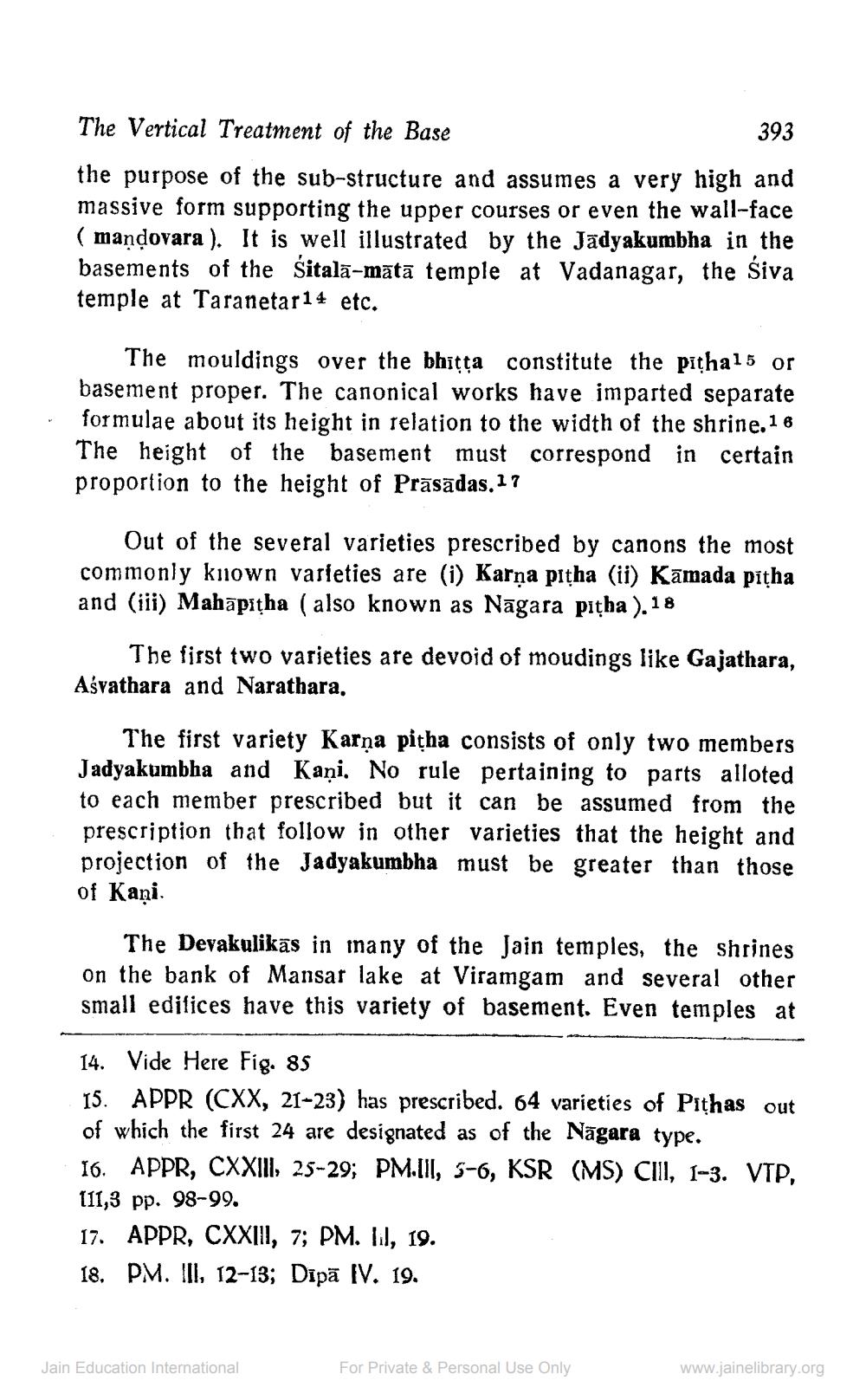________________
The Vertical Treatment of the Base
393
the purpose of the sub-structure and assumes a very high and massive form supporting the upper courses or even the wall-face ( mandovara ). It is well illustrated by the Jadyakumbha in the basements of the sitalā-mātā temple at Vadanagar, the Siva temple at Taranetar14 etc.
The mouldings over the bhitta constitute the pitha15 or basement proper. The canonical works have imparted separate formulae about its height in relation to the width of the shrine. 16 The height of the basement must correspond in certain proportion to the height of Prāsādas.17
Out of the several varieties prescribed by canons the most commonly known varieties are (i) Karņa pitha (ii) Kāmada pītha and (iii) Mahāpıtha (also known as Nāgara pitha). 18
The first two varieties are devoid of moudings like Gajathara, Aśvathara and Narathara,
The first variety Karņa pitha consists of only two members Jadyakumbha and Kaņi. No rule pertaining to parts alloted to each member prescribed but it can be assumed from the prescription that follow in other varieties that the height and projection of the Jadyakumbha must be greater than those of Kaņi.
The Devakulikās in inany of the Jain temples, the shrines on the bank of Mansar lake at Viramgam and several other small edifices have this variety of basement. Even temples at
14. Vide Here Fig. 85 15. APPR (CXX, 21-23) has prescribed. 64 varieties of Pithas out of which the first 24 are designated as of the Nāgara type. 16. APPR, CXXIII, 25-29; PM.III, 5-6, KSR (MS) CIII, 1-3. VTP, 111,3 pp. 98-99. 17. APPR, CXXIII, 7; PM. III, 19. 18. PM. III, 12-13; Dipā IV. 19.
Jain Education International
For Private & Personal Use Only
www.jainelibrary.org




